You are here
The fortress of Bukhara. Mokhammad Narshahi.
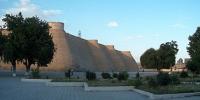

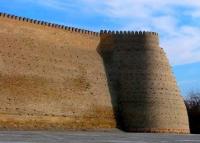
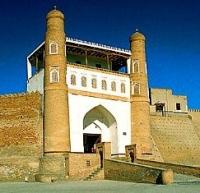

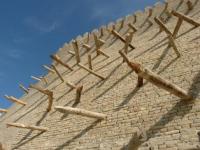
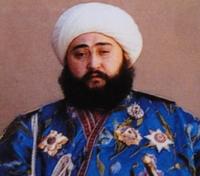

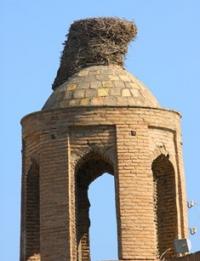
Visiting architectural monuments in Bukhara.
“No matter how you fondle the snake, calling it your favorite child, - She, having become angry, poison you with poison. Who is disgusting - has a vile snake, With a bastard do not hang around, do not be with a contemptible series"
Rudaki Abu Abdullah Jafar.
The list of architectural monuments in Bukhara.
Ahmad, the son of Muhammad, the son of Nasr, says that Abdul-Hassan-Nishaburi in the book "Hazainu-l-ulum" tells about the reason for the construction of the fortress in Bukhara: "Siyaush, the son of Qaykus, fled from his father, crossed the Jaihun river and showed up to Afrasiab.
Afrasiab very well received Siyausha, gave his daughter for him and even, they say, gave him all their possessions. Siaush, who thus received the Bukhara region for temporary possession, wished that some memory of his dominion was left here; he built this fortress and there advantage but he lived.
Envious people managed to embroil Siyusha with Afrasiab, and Afrasiab killed Siyush. In the same fortress, near the entrance through the eastern gate, inside the straw seller's gate (they are also called Gurian gate), he was buried for this reason. respect to this place, every year, on the day of the new year, even before the sun rises, every man, according to custom, stings one rooster here in memory of Siyaush.
The residents of Bukhara have songs about the killing of Siyaush known in all areas; the musicians composed a motive for them and sing them.
Reciters call these songs "weeping magicians." More than 3000 years have passed since this event. So, according to this legend, a fortress in Bukhara was founded by Siaush. Some historians claim that the fortress was built by Afrasiab.
The fortress came to destruction and remained in ruins for a long time, until Bidun BukharHudat, the woman’s husband, about whom Tahshad’s father was told, took the throne. He sent a man who renewed the fortress wall and built a palace there.
The builder inscribed his name on an iron plate, which he nailed to the gates of the palace. This plaque was preserved at the gates of the palace until the translator’s life of this book (522), but Ahmad, the son of Muhammad, the grandson of Nasr, says that the fortress was destroyed and the gate was also destroyed.
Ahmad, the son of Muhammad, the son of Nasr, reports from the words of Jafar and Abul-Hasan Nishaburi that when Bidun Bukhar-Khudat built this palace, he immediately collapsed; no matter how many times the building was resumed, it was immediately destroyed.
Then they gathered scientists and asked their advice, by what means could one achieve that the erected structure did not collapse? Scientists with the general consent gave advice to build the building according to a plan similar to the constellation Ursa Major, on 7 stone pillars.
And indeed, when they finished building the palace according to the plan indicated by the scientists, the building did not collapse. It is also surprising that since the construction of this palace, not one king who lived in it has been defeated, but always gained the upper hand.
In addition, since the construction of the palace, not one king of either the pagans or the Muslims has died in it: as soon as the king’s predetermined time of death approached, immediately, against his will, some reason made him leave the palace for a while. another place where his death hour set him.
From the time of construction until the destruction of the fortress, there was no one exception to this rule. There were two gates in the fortress: east and west; the eastern was called the gate "Guriyan", and the western - the gate "Riga", and by the time of the translation of this book they were called the "gate of hay sellers".
In the middle of the fortress from one gate to the other ran the road. The fortress served as the seat of kings, amirs, and rulers; the prison and tsar’s offices were also located there. The king lived in the palace since ancient times; right there was serale and treasury.
During the life of the translator of this book, the fortress lay in ruins; but a few years ago, Arslan Khan ordered her to be repaired, elected her as his seat, and appointed a notable amir the commandant of the fortress so that, according to the instructions given to him, he would manage the fortification and protect him.
All were aware of the importance of this fortress. When in 534 (1139 - 40 GG) Kharazm-shah came to Bukhara (Harazm-Shah-Atsiz (1128 - 1156), who rose against Sultan Sanjar.). The caliph (that is, the vicar) was Amir Zangi-Ali, who ruled Bukhara, as the vicar of Sultan Sanjar (the famous Seljuk sultan (1119 - 1157).
Kharazm Shah captured and killed Zangi-Ali and destroyed the fortress, and she was in ruins for more than two years. In 536 (1141 – 1142), Alp-Tegin became the governor of Gurkhan (the title of sovereign Kara-Kitai, who in 1141 conquered Mavarannagr) in Bukhara and in the same year he ordered the fortress to be rebuilt and he chose her the seat.
The fortress after the repair was even better than before. In the month of Ramazan 538 (1144), mercenaries from Guz came to Bukhara (the Turkic tribe from which the Seljuk dynasty originated. Mercenaries from the Guses were in the service of Sanjar); Ain-ud-daula, Karacha.-bek and vizier Shahab were besieged in the fortress.
After a stubborn and prolonged battle, the Guz mercenaries took possession of the fortress, killed Vizier Shihab and destroyed the fortress, which remained in ruins for a long time. In 560 (1164 - 1165), it was recognized that it was necessary to protect Bukhara with a wall, and the foundation had to be erected of burnt brick.
The foundation and towers of the fortress were built of burnt bricks; they were removed and used to build the city walls of Bukhara. So the fortress was immediately destroyed, and there were no traces left from the palace mentioned.
In 604 (1207 - 1208), Kharazm-Shah Muhammad (1200 - 1220), the son of Sultan Takash, captured Bukhara and restored the fortress again. The Chinese were defeated. In 616 (1219-1220) the year (the Mongols conquered Bukhara in February 1220) came the army of Tatars under the command of Genghis Khan.
At the gates of the fortress, a battle lasted for 12 days. The fortress was taken by Genghis Khan and destroyed.
Enlightener:
Muhammad Narshahi. "History of Bukhara". Tashkent. 1897. Translation by N. Lykoshin.
Photos by
Alexander Petrov.







